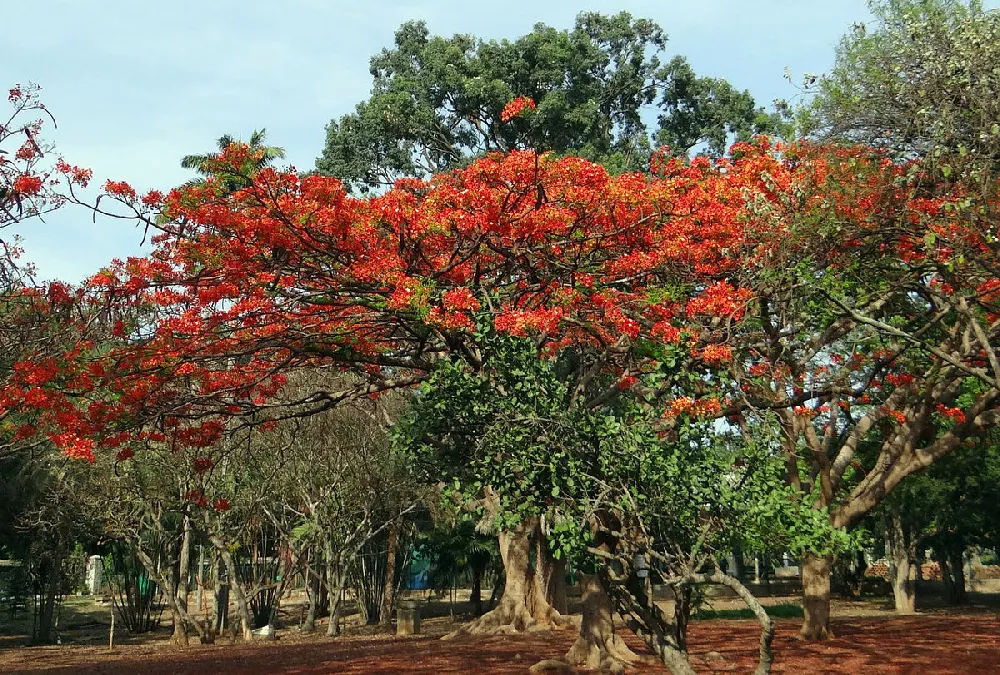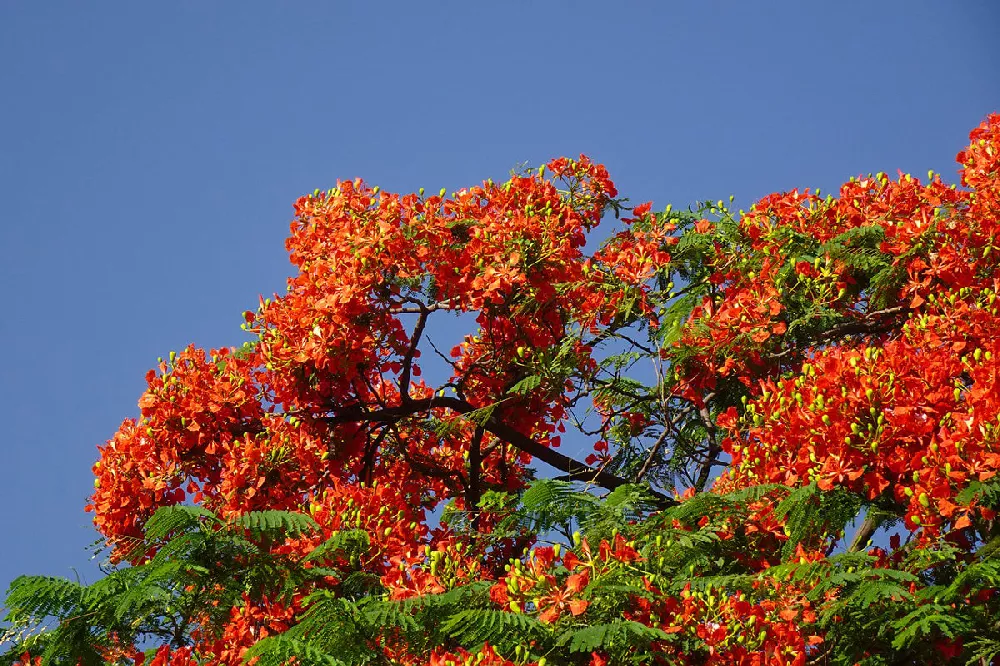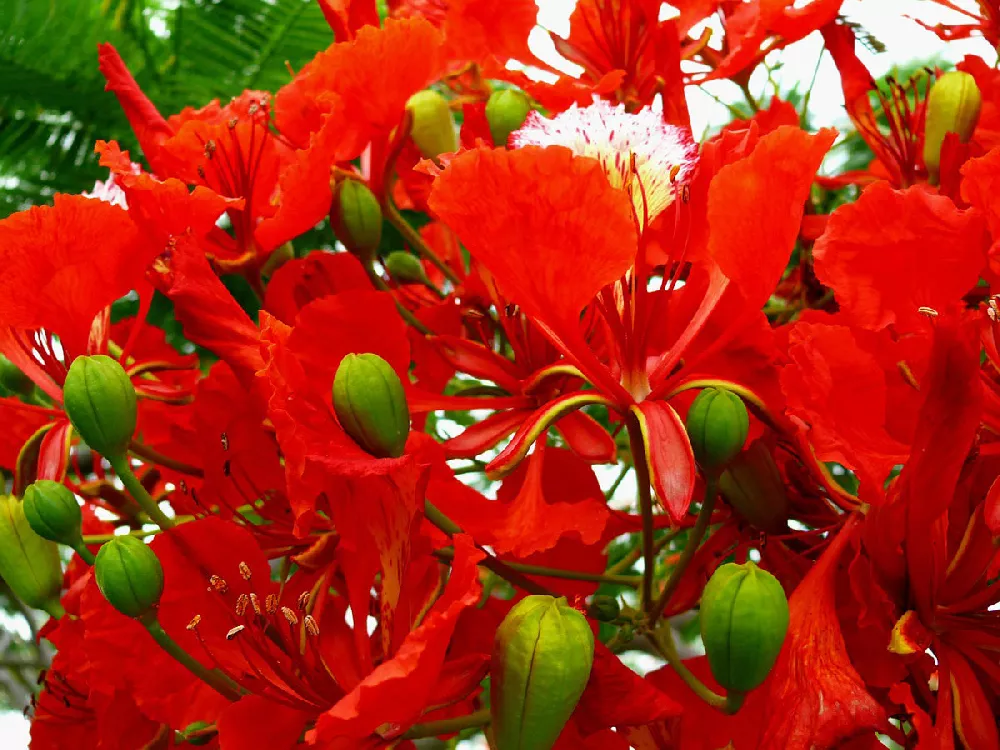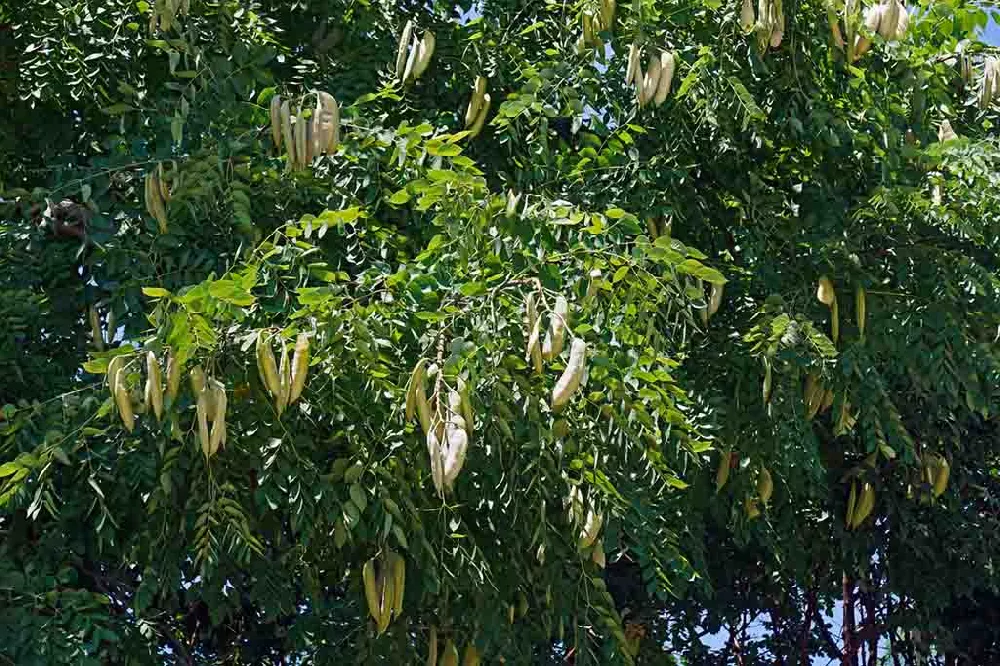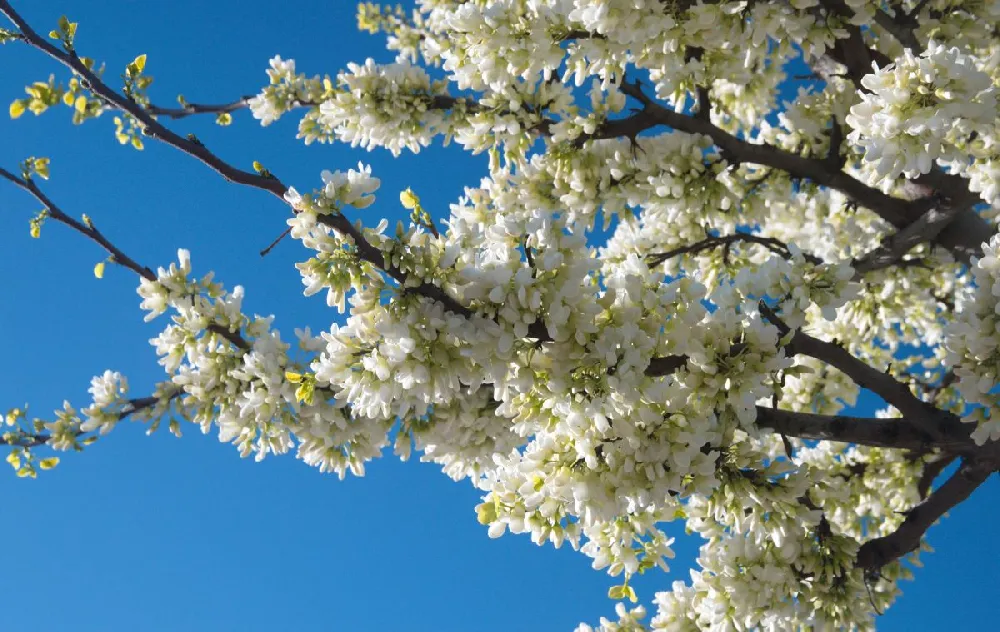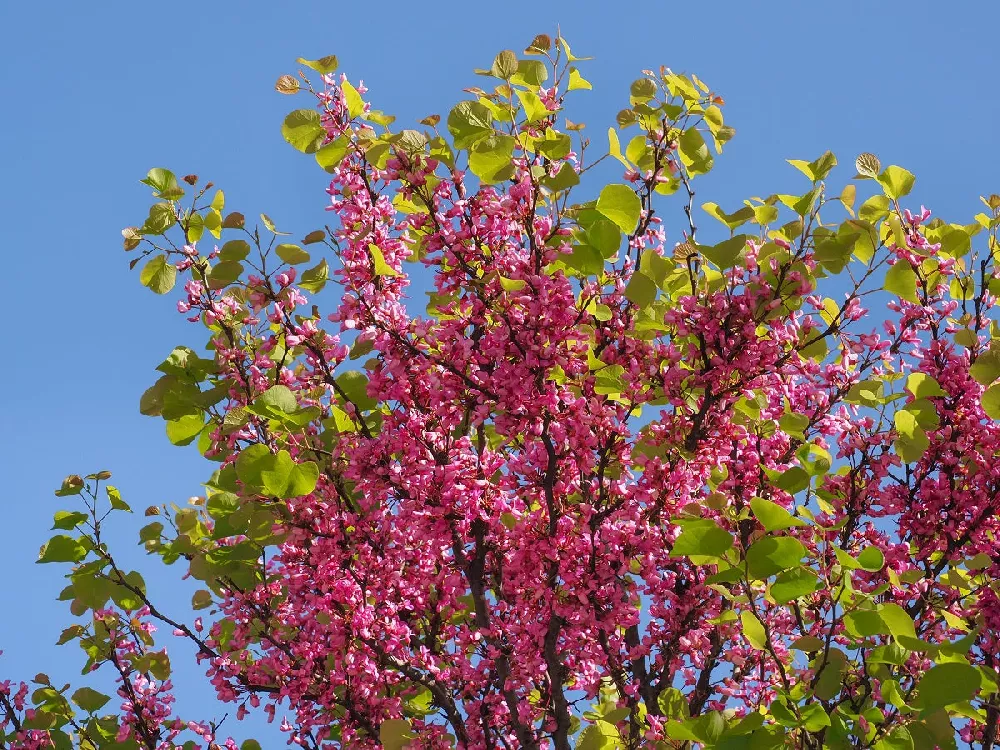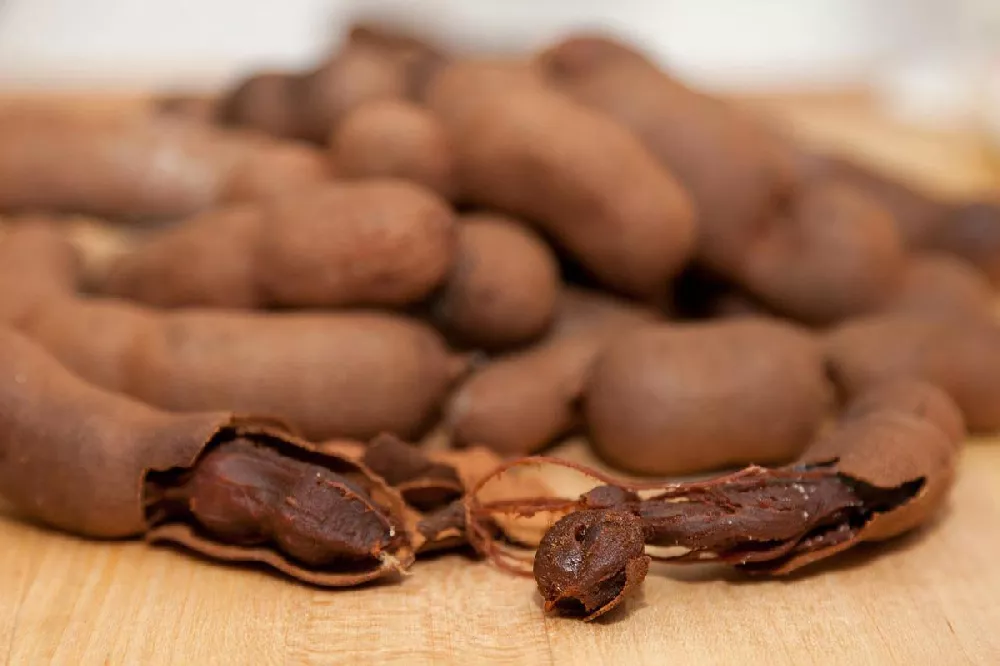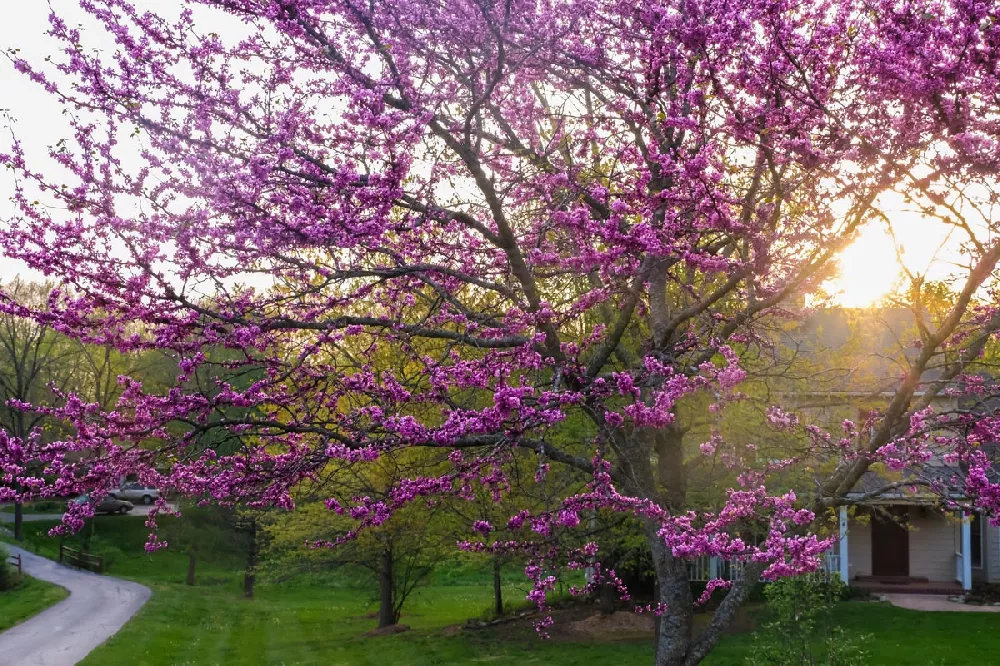Royal Poinciana Trees for Sale - Buying & Growing Guide
- Ships in 1-2 days
- 1-Year Warranty Eligible
- Pots or accessories are not included unless specified in the product options.
Shipping Details:
Products shipped through FastGrowingTrees.com. Once your order is shipped, you’ll receive an email with a tracking number and estimated delivery date. Most orders will ship immediately.
Few trees are as spectacular as a Royal Poinciana tree in bloom. This stately tree is a harbinger of summer, with spectacular scarlet flowers that cover the tree for a show-stopping display. Also known, for good reason, as a flame tree, Delonix regia is a fast-growing evergreen with mimosa-like, bipinnate leaves that are an attractive garden element even after the long-lasting blooms fade. There are many reasons why you might want a flame tree on your property; here are a few of them:
- A height of 20 to 40 feet creates a central focal point for gardens and lawns.
- Fast-growing trees put on roughly 5 feet of new growth a year.
- Flowers last throughout summer, not fading until temperatures start to drop.
Plant Care
Sunlight

Plant them where they will get 6 to 8 hours or more of direct light a day.
Watering
Keep soil moist when newly planted. Once established, the tree will be fine with an inch of water a week.
Fertilizing

Uses a balanced, slow-release fertilizer designed for landscape trees during the growing season.
Planting and Care
Planting instructions
Select a sunny location with well-draining soil for your Poinciana tree. Unpot or unwrap the root ball and tease out the roots so they are not encircling the root ball. Dig a hole that’s three times as wide and just as deep as the roots. Place the tree in the hole and hold it steady while you backfill the hole with soil that’s been enriched with compost. Tamp down as you go to avoid air pockets.
After planting, water your Royal poinciana thoroughly and cover the surrounding root zone with an organic mulch, such as bark chips. Water the tree every other day for the first few weeks after planting, but don’t allow the ground to get soggy.
Watering and nutrients
Once established, your Royal poinciana tree should be fine if it receives about one inch of water a week, either from rain or supplemental watering. If the top two inches of soil are dry, give it a drink, watering until the soil is evenly moist but not saturated.
Fertilize your tree in the early spring, using a balanced, slow-release product designed for landscape trees. You can give it a supplementary feeding by spreading well-rotted manure or compost around the root zone annually, covering it with mulch.
Pruning
Prune out dead or diseased branches whenever you see them. Also note any branches that are rubbing against each other, and prune them as well. In early spring, before new growth begins, prune back any major branches that are either too low on the trunk or too high.
You may also prune to shape your tree. Aim for a full, wide silhouette, cutting back any branches that are sticking outside of the silhouette, as these are prone to breakage when it is windy. Aim to keep all the tree’s major branches roughly 8 to 12 feet from the ground.
Pests, diseases, and animals
Royal Poinciana trees are not bothered by many pests or diseases, and are relatively care-free for owners. Spider mites and scale insects may be attracted to the trees, but a healthy flame tree can resist infestations. They may also attract termites and borers, but if you suspect infestation, your best bet is to contact a professional arborist to handle it.
Possible diseases of the poinciana include stem canker disease, which is characterized by bark lesions and dieback. This fungal disease responds well to chemical fungicides.
Achieving maximum results
Proper placement of your Royal poinciana tree is vital to ensuring its healthy growth. It has a shallow, wide root system which can impact sidewalks and driveways if planted too close, and it’s best to avoid planting it in areas close to septic systems or ponds.
Avoid planting your Royal poinciana tree anywhere that sees frost. Their seed pods are toxic, so you should also steer clear of planting them in any areas where pets roam.
FAQs
Where is Royal poinciana native?
Flame trees are native to Madagascar, but can be found growing in tropical and semi-tropical areas across the globe. Their bright flowers and attractive forms make them a welcome addition to landscapes in warm regions on several continents.
Are poinciana roots invasive?
Royal poincianas do need significant space to be fully appreciated. They are wide, horizontally-oriented trees with equally wide root systems. If planted near a foundation or driveway, it's possible the roots may try to find their way under and cause damage. The best location for your poinciana is in the middle of a large lawn area or in some other spot that is not near any structures, water features, or septic systems.
Are poincianas poisonous?
Yes, mildly so. Their seed pods can cause illness and discomfort, as well as vomiting and diarrhea. Avoid planting them in a backyard if your dog has the run of it.
When will my poinciana bloom?
The Royal poinciana blooms in late spring leading into summer. If you have just planted a young sapling, it will be several years before it rewards you with blooms. Keep your tree well-watered and fertilized, and you should see blossoms within a few years.
